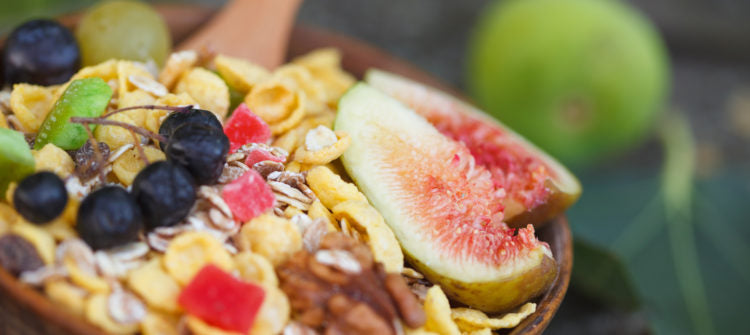Gluten Free Diet
We're increasingly hearing about gluten-free diets designed for people with intolerance to this ingredient. Recipes for gluten-free baked goods and dishes can be found everywhere, and people without diagnosed intolerance are opting for this type of diet. What is the condition, what are its symptoms, and what does a gluten-free diet look like?
Celiac disease
Gluten intolerance is caused by celiac disease, a condition in which antibodies are produced in response to gluten, leading to damage to the intestinal villi and digestive upset. The reaction is caused by grain protein fragments found in wheat, barley, and leek. 1% of the world's population suffers from celiac disease.
If left untreated, the disease can lead to a range of conditions in people who do not avoid gluten in their diet, including infertility, osteoporosis, and some cancers. The cause of the disease can be genetic, immunological, and environmental factors. It affects people of all ages. Women are at greater risk— twice as many men suffer from celiac disease. The risk of disease is high in people who have the disease in a close family. The only known treatment so far is a gluten-free diet.
Celiac disease can have many symptoms, including extraintestinal ones. These include:
- Abdominal pain and nausea,
- flatulence,
- Diarrhea,
- weight loss,
- in children, inhibition of maturation and growth,
- Anemia,
- Osteoporosis,
- Lactose and sucrose intolerance,
- Aphthous ulcers,
- Enamel hypoplasia and caries,
- Type I diabetes,
- Muscle weakness and arthritis,
- high cholesterol levels
- iritis,
- migraine
- Depression,
- absent menstruation or irregular cycle,
- Infertility,
Because celiac disease can occur at any age, even in the youngest children, it's important that parents or a doctor recognize it as soon as possible. The most common symptoms include:
In infants:
- growth retardation,
- Loss of appetite, vomiting, diarrhea,
- frequent infections.
For children up to 3 years:
- Loss of appetite
- nausea,
- Vomit,
- flatulence,
- Diarrhea,
- Developmental and growth delay.
For children over 3 years:
- Diarrhea,
- Osteoporosis,
- general weakness,
- iron deficiency,
- Changes in the oral mucosa,
- clearly depressed mood.
People suffering from celiac disease struggle with many deficiencies that should be addressed through proper nutrition. The most common deficiencies in the body include vitamins A , D, E, K, and B12, folic acid, calcium, and iron.
Gluten-free diet
Treatment with the introduction and consistent adherence to a gluten-free diet yields excellent results – normal development and growth in children becomes possible, while in people whose disease manifests in old age, it leads to a state before the onset of symptoms. Avoiding all wheat, barley, and rye products allows you to lead a normal life and get rid of the annoying symptoms of celiac disease. Many doctors consider oats in the form of grain to be low in toxicity and allow for consumption in small amounts.
A gluten-free diet involves the use of substitutes for gluten-containing products. These are most commonly corn, rice, and millet, as well as various types of starch, which are also found in mixtures. Gluten is an ingredient responsible for the proper formability of dough, which is why it is replaced with various natural and synthetic agents that give the dough the right consistency.
People with celiac disease should plan their diet according to the list of gluten-free ingredients. There are many natural and processed products that can be consumed for this condition. These include: meat, fish, milk and dairy products, eggs , vegetable oils, butter, vegetables and fruits, nuts, corn, rice and millet, amaranth, quinoa, and others. Keep in mind that some foods may be contaminated with gluten, for example, during production, so always check the packaging to see if there is a risk of gluten in the product.
Fortunately, the number of widely available gluten-free products designed for people who avoid this ingredient in their diet has increased significantly. They feature a crossed-out grain symbol on the packaging, guaranteeing the product's gluten-free status. Certified gluten-free products are available in well-stocked supermarkets, as well as online and brick-and-mortar health food stores.
When examining the ingredients of commercially available products, you should also consider the various types of additives they may contain. Additives permitted for a gluten-free diet include:
- E406 - Agar ,
- E407 - Carrageenan,
- E410 - Locust bean gum,
- E412 - Guar gum,
- E415 - Xanthan gum,
- E440 - Pectin,
- E466 - carboxymethylcellulose,
- E1401 - modified starch,
- Fructose syrup,
- Maltodextrin,
- Egg albumin,
- gluten-free baking powder.
The most important rules for a gluten-free diet are conscious food shopping and consistent adherence to the assumptions that allow you to control the disease as much as possible and avoid its distressing symptoms.
THE PUBLISHER'S CHOICE
Almonds 1 kg BIOGO
- €11,69
€13,75- €11,69
- Unit price
- / per
Walnuts 800 g BIOGO
- €8,65
€10,18- €8,65
- Unit price
- / per
Dried organic mango 400 g BIOGO
- €10,99
- €10,99
- Unit price
- / per
Dried White Mulberries 500 g ORGANIC
- €5,84
€6,87- €5,84
- Unit price
- / per
Dried organic figs 800 g BIOGO
- €30,12
- €30,12
- Unit price
- / per
Unpeeled buckwheat groats 1 kg BIOGO
- €2,81
€3,31- €2,81
- Unit price
- / per
Organic coconut flakes 500 g BIOGO
- €10,07
- €10,07
- Unit price
- / per
Organic oat flakes 600 g BIOGO
- €3,77
- €3,77
- Unit price
- / per
Organic cashew nuts 1 kg BIOGO
- €19,99
- €19,99
- Unit price
- / per
Milk thistle seeds 1 kg BIOGO
- €3,99
- €3,99
- Unit price
- / per









































































































































